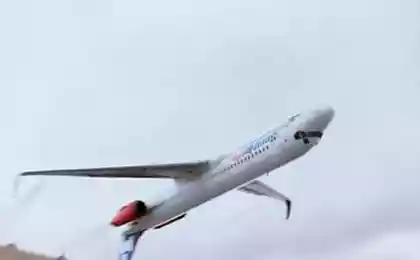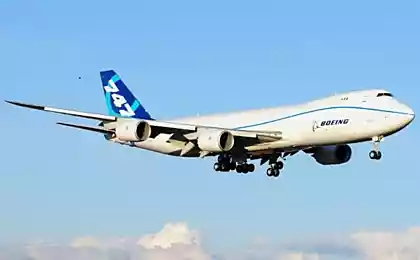1131
Unscheduled landing in Manitoba
23th July 1983 a Boeing 767-200 of Air Canada Air Canada flight 143 carried at an altitude 40,000 feet stopped both engines, and the plane was forced to plan to make an unscheduled landing at the former military air base in the province of Manitoba Gilman (Gilmi , Manitoba).

The story began with a strange combination of circumstances. Typically, 767 fueling almost automatically by the system control and display the quantity of fuel (Fuel Quantity Information System Processor), which controls the fuel pumps and advise the pilot of the aircraft during the refueling of aircraft fuel. Before the flight by plane described by the system was not working and had to determine the amount of fuel in the tanks using a mechanical meter, which shows the total amount of fuel in the aircraft. This problem is apparent when the calculated amount of fuel that pertain to flight from Montreal to Edmonton. Fuel required for flight rasschityvetsya by weight rather than volume, thus, the results of measurement of mechanical fuel needed to convert a weight value.
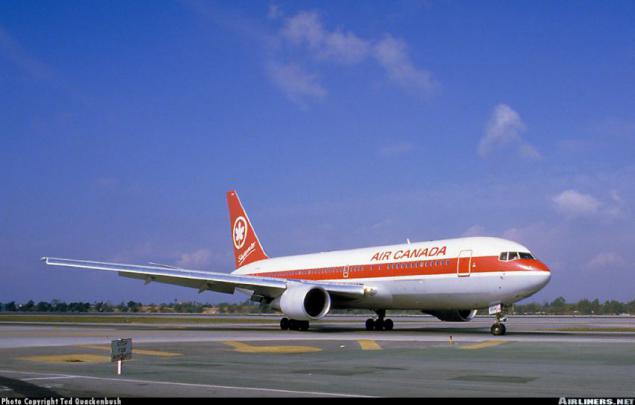
At this time, Canada transition to the metric system.
This Boeing 767 fuel measured in kilograms, while the entire leadership and all other Air Canada aircraft used lbs. Value pound to other liter kerosene averages 1, 77, whereas this ratio for the kilogram 0, 8. As a result of incorrect conversion aboard turned instead calculated only 20 400 kg 9144 kg of kerosene. These data were entered into the on-board computer, which determined that a given amount of fuel sufficient for the planned flight. In fact, the plane was just 9144kg, which is clearly not enough for flight. Both the pilot and the three counted the number of tanker fuel and, after comparing the result Captain Bob Pearson (Captain Bob Pearson) made the decision to fly.
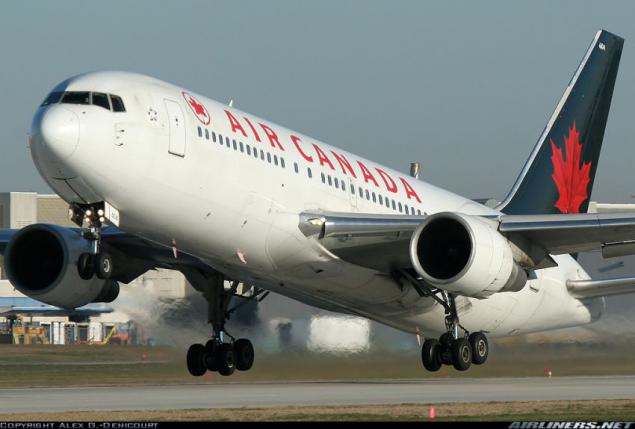
After a short flight from Montreal to Ottawa, the amount of fuel in the tanks of the aircraft has been tested again and again transfer from liters to kilograms has been executed incorrectly. Then they took off. To perform a flight from Ottawa to Edmonton. But the height of 41,000 feet (12, 5 km) above the Red Lake (Red Lake, Ontario), which is halfway worked indication of the pressure drop of fuel left in the fuel system of the engine. The pilots thought that there was a failure of the fuel pump and turn it off. The computer showed enough fuel, but of course it was false readings. After a few seconds the alarm went off failure of the left engine, and the pilots decided to follow in Winnipeg. They were getting ready for landing with one engine. At a time when the crew tried to run and stop the engine contacted the manager of Winnipeg for the organization of an emergency landing, an alarm system on the refusal to grant a long lingering sound that the crew had never heard before.
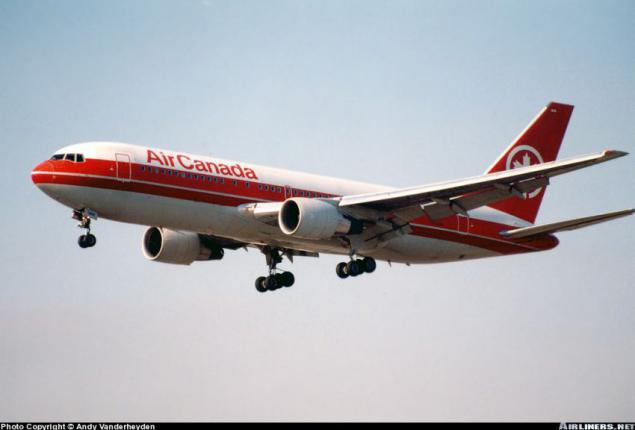
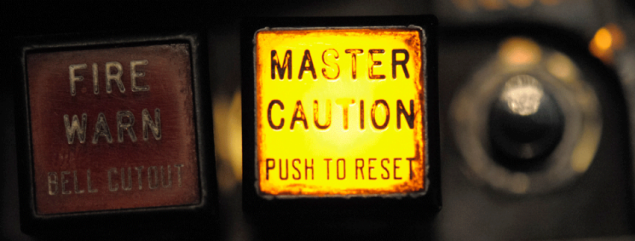
Beep "failure of all engines" was not installed on the B767 aircraft simulator. Very soon, and the right engine of the aircraft stopped, turning a large passenger airplane in the normal glider. The cockpit recorder and was located in a "black box" recorded only exclamation «Oh, f **!». Cockpit B767 is built on the concept of «glass cockpit», is when mechanical devices are replaced by «glass cockpit» on display for more convenient information perception. But the display is powered by electricity, which is produced Engine. In this case, the display goes off, the pilots complicating an already difficult situation. From working devices on the plane was only Vario which shows the vertical speed of descent. In addition, the engines are supplied aircraft control system and the pressure in the hydraulic system, without which control such a large plane is quite problematic.
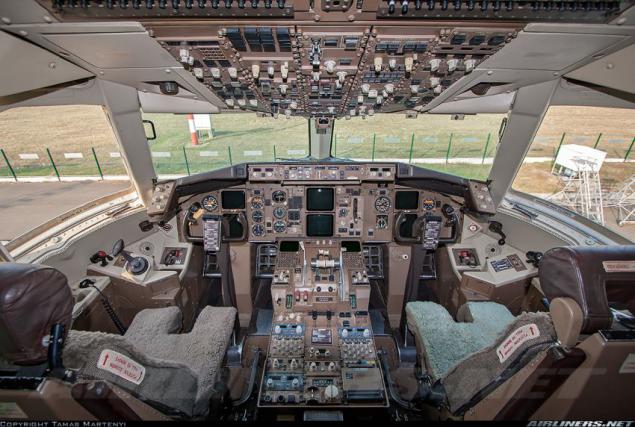
For this situation B767 is provided on a system that uses the power of the incident flow is a pressure in the hydraulic system and generate electricity. This system is a propeller, which is provided with a generator and a hydraulic pump. Thanks to this system, which is called the RAT (ram air turbine), the pilots were able to fly a plane. Further pilots quickly opened QRH (quick reference hand book-a book which describes the actions of the crew in various failures), and began to look for the section "Flying with engine failure." What they found is the lack of such a section.
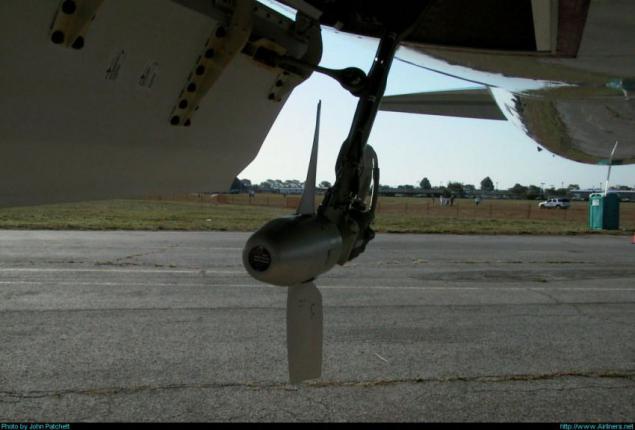
Captain Pearson began to withstand the speed of 220 knots. That is, the plane had planned at this speed. Copilot Maurice Quintal (Maurice Quintal) counted, whether they fly to Winnipeg, using the data for the calculation of mechanical altimeter readings and locator Manager Winnipeg. The plane lost 5,000 feet of 10 nautical miles. The result was disappointing counting: to Winnipeg, they did not reach. At this point, the co-pilot chose the former base of the Royal Canadian Air Force Gilman (Gimli) emergency landing. The co-pilot did not know that at the time of his life on the basis of it has ceased to be a military and used for racing karts. In order to understand how the crew's not luck, it is possible to add that on the occasion of "Family Day" at the base had a lot of tourists and cars.

At the approach to the selected landing site copilot attempted landing gear using the emergency system. The main landing gear steel locks, and the front desk, despite the fact that it helped the air flow is not got to the castle. When reducing the flying speed decreases and the efficiency of RAM, which is difficult to control the aircraft. When they approached the runway of the former air base, it became apparent that the aircraft is flying too high and too fast. In this situation, the captain took the right, rather a possible solution. He slowed the aircraft to 180 knots, and for the loss of height taken maneuver atypical for commercial airliners - glide on the wing (the pilot pushes the left pedal and turn the wheel to the right or vice versa, with the aircraft rapidly loses speed and height). However, this maneuver is to reduce the speed of rotation of the turbine emergency, and the pressure in the hydraulic control has fallen even more. Pearson was able to bring the plane out of the maneuver almost at the last moment.
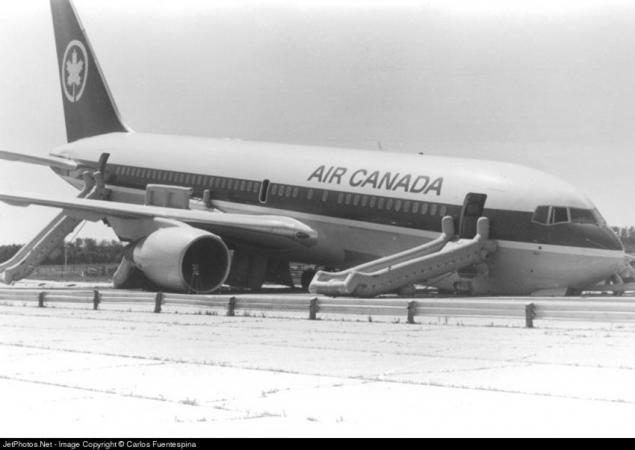
The plane was down on the strip, racers and spectators began to disperse it. When the wheels touched the band Pearson slammed on the brakes. Tires instantly overheated, emergency valves are released from the air, the front desk there was unfixed, nose touched the concrete carving trail of sparks right engine nacelle hooked land. People had to leave the band, and Pearson did not have to move out with her, save the people on the ground. Boeing stopped less than 30 meters from the spectators.
The bow of the aircraft started a small fire and was given the command to evacuate the passengers. Due to the fact that the tail was raised, the slope of the ramp in the back of the inflatable emergency exit was too big, several people were injured lungs, but no one was hurt seriously. The fire was soon extinguished by the motorists with dozens of hand-held fire extinguishers.
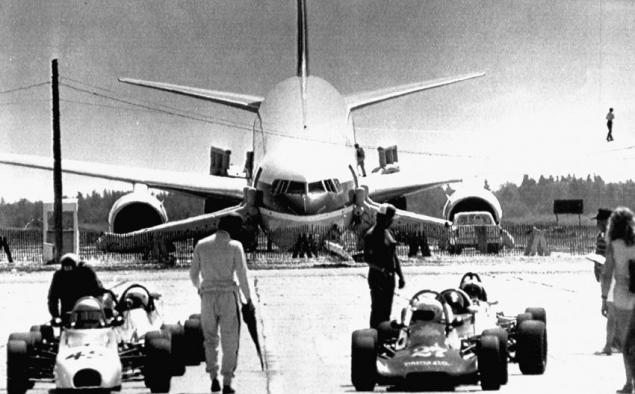
Two days later, the plane was repaired on the spot and was able to fly out of Gimli. After further repair cost of about $ 1 million aircraft was returned to service. January 24, 2008 the aircraft was sent to the base of the storage in the Mojave Desert.
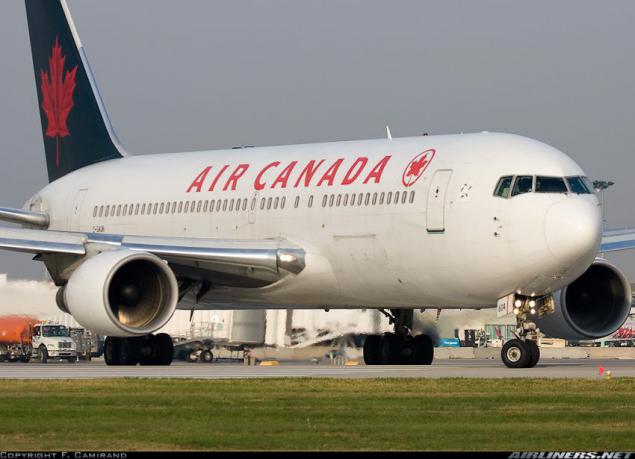
2007
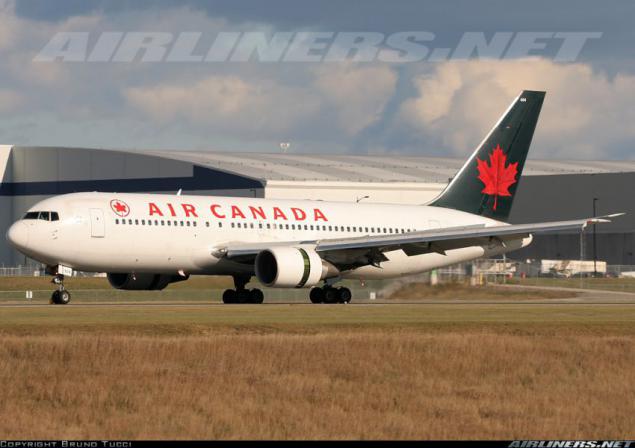
in the Mojave Desert.
All photos except the Master Caution, turbines this image is that the Boeing 767-233 (C-GAUN)
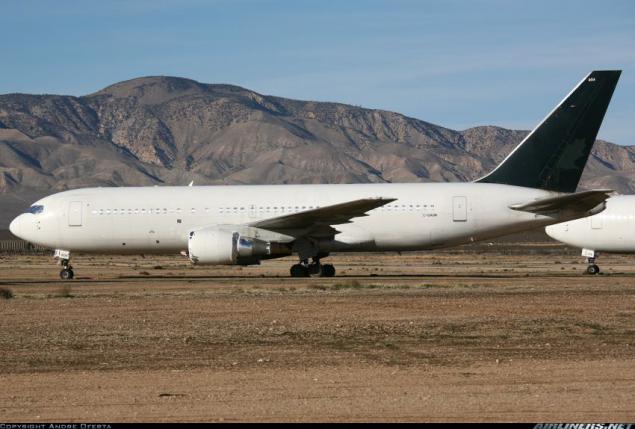

The story began with a strange combination of circumstances. Typically, 767 fueling almost automatically by the system control and display the quantity of fuel (Fuel Quantity Information System Processor), which controls the fuel pumps and advise the pilot of the aircraft during the refueling of aircraft fuel. Before the flight by plane described by the system was not working and had to determine the amount of fuel in the tanks using a mechanical meter, which shows the total amount of fuel in the aircraft. This problem is apparent when the calculated amount of fuel that pertain to flight from Montreal to Edmonton. Fuel required for flight rasschityvetsya by weight rather than volume, thus, the results of measurement of mechanical fuel needed to convert a weight value.

At this time, Canada transition to the metric system.
This Boeing 767 fuel measured in kilograms, while the entire leadership and all other Air Canada aircraft used lbs. Value pound to other liter kerosene averages 1, 77, whereas this ratio for the kilogram 0, 8. As a result of incorrect conversion aboard turned instead calculated only 20 400 kg 9144 kg of kerosene. These data were entered into the on-board computer, which determined that a given amount of fuel sufficient for the planned flight. In fact, the plane was just 9144kg, which is clearly not enough for flight. Both the pilot and the three counted the number of tanker fuel and, after comparing the result Captain Bob Pearson (Captain Bob Pearson) made the decision to fly.

After a short flight from Montreal to Ottawa, the amount of fuel in the tanks of the aircraft has been tested again and again transfer from liters to kilograms has been executed incorrectly. Then they took off. To perform a flight from Ottawa to Edmonton. But the height of 41,000 feet (12, 5 km) above the Red Lake (Red Lake, Ontario), which is halfway worked indication of the pressure drop of fuel left in the fuel system of the engine. The pilots thought that there was a failure of the fuel pump and turn it off. The computer showed enough fuel, but of course it was false readings. After a few seconds the alarm went off failure of the left engine, and the pilots decided to follow in Winnipeg. They were getting ready for landing with one engine. At a time when the crew tried to run and stop the engine contacted the manager of Winnipeg for the organization of an emergency landing, an alarm system on the refusal to grant a long lingering sound that the crew had never heard before.


Beep "failure of all engines" was not installed on the B767 aircraft simulator. Very soon, and the right engine of the aircraft stopped, turning a large passenger airplane in the normal glider. The cockpit recorder and was located in a "black box" recorded only exclamation «Oh, f **!». Cockpit B767 is built on the concept of «glass cockpit», is when mechanical devices are replaced by «glass cockpit» on display for more convenient information perception. But the display is powered by electricity, which is produced Engine. In this case, the display goes off, the pilots complicating an already difficult situation. From working devices on the plane was only Vario which shows the vertical speed of descent. In addition, the engines are supplied aircraft control system and the pressure in the hydraulic system, without which control such a large plane is quite problematic.

For this situation B767 is provided on a system that uses the power of the incident flow is a pressure in the hydraulic system and generate electricity. This system is a propeller, which is provided with a generator and a hydraulic pump. Thanks to this system, which is called the RAT (ram air turbine), the pilots were able to fly a plane. Further pilots quickly opened QRH (quick reference hand book-a book which describes the actions of the crew in various failures), and began to look for the section "Flying with engine failure." What they found is the lack of such a section.

Captain Pearson began to withstand the speed of 220 knots. That is, the plane had planned at this speed. Copilot Maurice Quintal (Maurice Quintal) counted, whether they fly to Winnipeg, using the data for the calculation of mechanical altimeter readings and locator Manager Winnipeg. The plane lost 5,000 feet of 10 nautical miles. The result was disappointing counting: to Winnipeg, they did not reach. At this point, the co-pilot chose the former base of the Royal Canadian Air Force Gilman (Gimli) emergency landing. The co-pilot did not know that at the time of his life on the basis of it has ceased to be a military and used for racing karts. In order to understand how the crew's not luck, it is possible to add that on the occasion of "Family Day" at the base had a lot of tourists and cars.

At the approach to the selected landing site copilot attempted landing gear using the emergency system. The main landing gear steel locks, and the front desk, despite the fact that it helped the air flow is not got to the castle. When reducing the flying speed decreases and the efficiency of RAM, which is difficult to control the aircraft. When they approached the runway of the former air base, it became apparent that the aircraft is flying too high and too fast. In this situation, the captain took the right, rather a possible solution. He slowed the aircraft to 180 knots, and for the loss of height taken maneuver atypical for commercial airliners - glide on the wing (the pilot pushes the left pedal and turn the wheel to the right or vice versa, with the aircraft rapidly loses speed and height). However, this maneuver is to reduce the speed of rotation of the turbine emergency, and the pressure in the hydraulic control has fallen even more. Pearson was able to bring the plane out of the maneuver almost at the last moment.

The plane was down on the strip, racers and spectators began to disperse it. When the wheels touched the band Pearson slammed on the brakes. Tires instantly overheated, emergency valves are released from the air, the front desk there was unfixed, nose touched the concrete carving trail of sparks right engine nacelle hooked land. People had to leave the band, and Pearson did not have to move out with her, save the people on the ground. Boeing stopped less than 30 meters from the spectators.
The bow of the aircraft started a small fire and was given the command to evacuate the passengers. Due to the fact that the tail was raised, the slope of the ramp in the back of the inflatable emergency exit was too big, several people were injured lungs, but no one was hurt seriously. The fire was soon extinguished by the motorists with dozens of hand-held fire extinguishers.

Two days later, the plane was repaired on the spot and was able to fly out of Gimli. After further repair cost of about $ 1 million aircraft was returned to service. January 24, 2008 the aircraft was sent to the base of the storage in the Mojave Desert.

2007

in the Mojave Desert.
All photos except the Master Caution, turbines this image is that the Boeing 767-233 (C-GAUN)

















